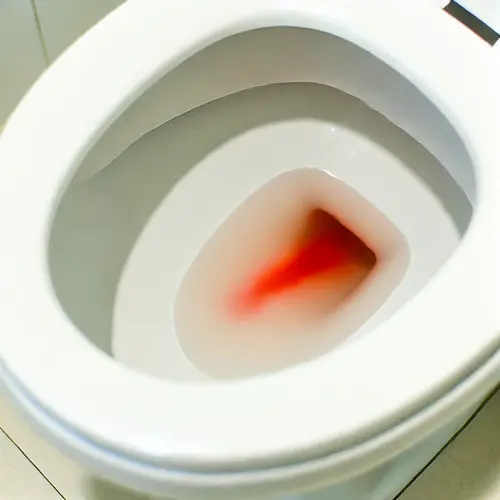Imagine seeing blood in your urine but feeling perfectly fine. No pain, no discomfort—just an unsettling sight that makes you pause. This scenario may seem like a mystery, but it’s your body’s way of quietly sounding the alarm. In this article, we’ll unravel the causes behind painless blood in urine, dive into some lesser-known stories, and help you navigate when it’s time to listen closely.
Hematuria: The Silent Leak
Let’s break it down: hematuria is the medical term for blood in urine. Sometimes it’s visible, turning the urine pink or red (gross hematuria). Other times, it’s only detectable under a microscope (microscopic hematuria). Either way, when there’s no pain, the cause often lurks in the background, waiting to be discovered.
| Visible Hematuria | Microscopic Hematuria |
|---|---|
| Blood visible to the naked eye, pink or red | Blood found only under microscopic examination |
| Often points to a more urgent medical issue | Detected during routine check-ups |
| Can be alarming but sometimes harmless | Could indicate a deeper, hidden condition |
Painless, But Not Harmless: Common Causes of Blood in Urine
1. Kidney Stones: The Sneaky Saboteurs
Kidney stones don’t always bring excruciating pain. Sometimes, small stones can pass quietly, causing bleeding in the urine. These silent travelers may only leave behind traces of blood, like a breadcrumb trail of their journey through your system.
2. Bladder Cancer: The Quiet Villain
Blood in your urine without pain can be the first sign of bladder cancer, especially in older adults. This villain doesn’t always make a scene but leaves a trail of clues. Early detection is crucial, as it often hides until it’s too late.
3. Enlarged Prostate: A Man’s Silent Alarm
For men, an enlarged prostate can cause painless hematuria. Often associated with aging, the enlarged prostate can press on the bladder, leading to occasional blood in the urine. Many men live with this condition without ever realizing the subtle signs.
4. Medications and Blood Thinners: Hidden Side Effects
Blood thinners like warfarin or aspirin can cause bleeding, including in the urine. Sometimes, the side effects are masked by the lack of pain, leaving only a silent red flag in the bathroom.
Real Stories: When Blood in Urine Was the Only Clue
Case Study 1: Julie’s Marathon Mystery
Julie, a 42-year-old fitness enthusiast, noticed blood in her urine after completing her third marathon. At first, she assumed it was dehydration or overexertion. Her doctor later diagnosed exercise-induced hematuria, a rare condition among long-distance runners. With a bit of rest and hydration, her symptoms vanished, but the lesson stuck—never ignore what your body is telling you, no matter how minor it seems.
Case Study 2: Frank’s Lucky Discovery
Frank, a 58-year-old retiree, went in for a routine physical. His urine test revealed microscopic traces of blood, but he felt perfectly fine. Further tests uncovered early-stage bladder cancer. Without that simple test, Frank’s condition might have progressed unnoticed. Thanks to early intervention, Frank is now cancer-free, but it was a close call.
Silent Symptoms: When to See a Doctor
Even without pain, blood in urine can be a serious sign. Here’s when it’s time to take action:
| Symptom | Potential Condition | Action |
|---|---|---|
| Persistent blood in the urine | Bladder/kidney issue | Urgent medical evaluation |
| Blood with a burning sensation | Urinary tract infection (UTI) | See a doctor for treatment |
| Blood with weight loss or fatigue | Possible cancer or chronic disease | Immediate medical attention |
| Blood after exercise | Likely benign, but monitor | Rest and consult if it persists |
When the Doctor is Your Detective: What to Expect
When blood appears in your urine without pain, it can feel like a medical mystery. But like any good detective, your doctor will start with clues and follow the evidence:
- Urinalysis
A simple urine test can confirm the presence of blood and help identify infections, abnormal cells, or other red flags. - Imaging Tests
CT scans or ultrasounds may be used to take a closer look at your kidneys, bladder, and urinary tract. These tests help rule out tumors, stones, or structural abnormalities. - Cystoscopy
In some cases, your doctor may use a small camera to visually inspect the bladder for signs of cancer or other issues.
Case Study 3: The Hidden Consequences of Ignoring Hematuria
Peter, a 60-year-old man, noticed blood in his urine but felt no discomfort, so he dismissed it as a minor issue. Six months later, his symptoms worsened, and he was diagnosed with advanced bladder cancer. Peter’s story is a reminder that blood in urine, no matter how painless, is never something to ignore. The earlier the detection, the better the chances of treatment.
Conclusion: Listen When Your Body Whispers
Finding blood in your urine without any pain can feel perplexing. While it may be tempting to shrug it off, your body could be trying to send a subtle message. Whether it’s a minor issue like dehydration or something more serious like bladder cancer, you owe it to yourself to investigate further. Your health deserves your attention—even when it’s not shouting for help.
Takeaway: Never ignore blood in urine, even if it’s painless. Early detection is often the key to resolving potentially serious conditions. Seek medical advice when you notice something unusual.
About the Author
Reyus Mammadli is the author of this health blog since 2008. With a background in medical and biotechnical devices, he has over 15 years of experience working with medical literature and expert guidelines from WHO, CDC, Mayo Clinic, and others. His goal is to present clear, accurate health information for everyday readers — not as a substitute for medical advice.







